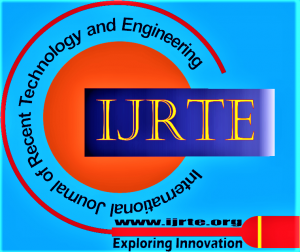![]()
FPGA Based Efficient OFDM Based Design and Implementation for Data and Image Transmission for Healthcare
Vasanth Kumar T. R
Vasanth Kumar T R, Department of Electrical Communication Engineering, AMD, Bangalore (Karnataka) India.
Manuscript received on 12 July 2023 | Revised Manuscript received on 25 July 2023 | Manuscript Accepted on 15 September 2023 | Manuscript published on 30 September 2023 | PP: 28-33 | Volume-12 Issue-3, September 2023 | Retrieval Number: 100.1/ijrte.C78650912323 | DOI: 10.35940/ijrte.C7865.0912323
Open Access | Editorial and Publishing Policies | Cite | Zenodo | Indexing and Abstracting
© The Authors. Blue Eyes Intelligence Engineering and Sciences Publication (BEIESP). This is an open access article under the CC-BY-NC-ND license (http://creativecommons.org/licenses/by-nc-nd/4.0/)
Abstract: Enormous growth in the telecommunication industry demands high-speed data transmission with better quality of service (QOS). Telecommunication networks offer services with speeds ranging from 1 Mbps to several megabits per second (Mbps). However, most existing techniques aim to ensure very high-speed data for multimedia communication. Multimedia data may have suitable applications in a healthcare system. The OFDM modulation technique promises to provide multimedia services at a relatively high speed using a spectrum more efficiently compared to traditional schemes like TDMA and FDMA. The orthogonality of carriers eliminates interference among closely packed carriers, offering a comparatively efficient bandwidth. The OFDM design requires selecting proper parameters. An essential feature of OFDM is that multipaths are effectively eliminated by choosing higher cyclic prefix values, which yields significant results but causes more energy loss. This paper presents an efficient design for an OFDM transceiver using an FPGA. The design is modelled and simulated using MATLAB Simulink. Finally, the design is coded using Verilog RTL and simulated in ModelSim. Synthesis and implementation are performed using the Xilinx EDA tool. The image type of data is taken for transmission in the proposed OFDM transceiver system. The received image type data achieves a PSNR value of 29.920, and the binary input data achieves a 36.06% improvement in power utilisation and less area overhead. The paper also demonstrates improvements in area and power compared to existing authors.
Keywords: FPGA, High Speed, OFDM, Power Optimization, Healthcare.
Scope of the Article: Healthcare Informatics
